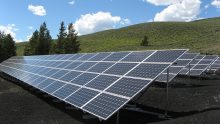A total of $7 million in grants was given by the Washington State Department’s Clean Energy Fund, as state utilities look to develop their microgrid programs.
According to Solar Industry Mag.com, Avista in Spokane and Snohomish County Public Utility District (SnoPUD), split the $7 million in half each from the Clean Energy Fund.
These projects are the next step in regenerating the grid in make it more flexible and more useful for delivery within Washington state.
Avista will start a “shared energy economy” model, which will provide many assets. Battery storage, solar panels to standard utility assets, will be shared many levels and will target for grid flexibility, plus system efficiency, according to Solar Industry Magazine.
“We know that the energy landscape will continue to change, and as a utility, we need to ensure our system will be flexible enough to meet the changing expectations and future needs of consumers,” said Avista’s Vice President of Energy Delivery Heather Rosentrater.
Avista’s shared energy economy model will provide positives for both utilities and consumers, as they reap the benefits of better efficiency and lower costs
Buildings under Avista’s project could have their opportunity at looking at energy sharing schemes. One example of this is installing battery storage units and solar panels on two different buildings. Now imagine every management system which connects to these building while the system tracks the greatest need for power while ensuring enough solar or stored energy from the storage units is necessary.
Meanwhile, SnoPUD will use its grant money to create a cleantech center and microgrid in Arlington, Washington. The center will showcase how emerging technologies work, as a cohesive unit, by enhancing combining renewables, grid flexibility, and disaster recovery. The proposed center will educate local citizens, and industry representatives on how these technologies work, according to Solar Industry Magazine.
SnoPUD, already installed one of the biggest American flow battery systems. Washington companies and researchers played key roles in developing this system along with financial aid from the clean energy program.
Microgrids in are gaining traction as utilities are facing a changing marketplace. Declining renewable energy costs, increased risk of extreme weather events from climate change, and security risks are in the front focus of utilities. Many companies are seeing the benefits of looking towards microgrids as a solution. With microgrid markets expected to rise soon rapidly, it’s wise for utilities in maximizing the potential of microgrids. As shown with Avista’s and SnoPUD’s forte into microgrids, expect more microgrid advancement within Washington state soon, thanks to its Green Energy Fund.



